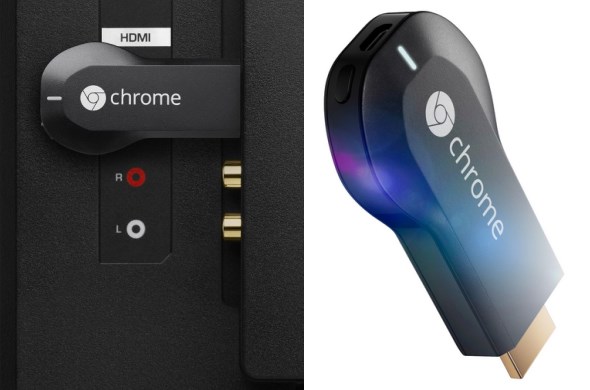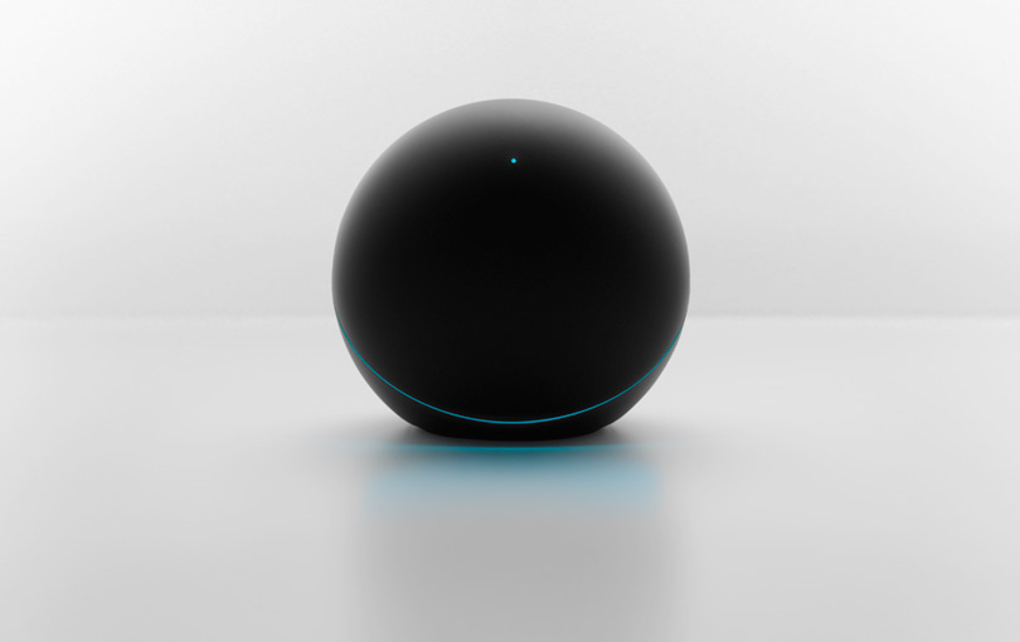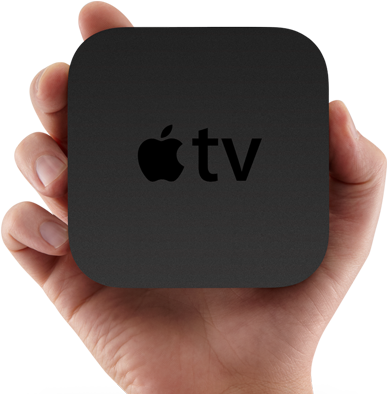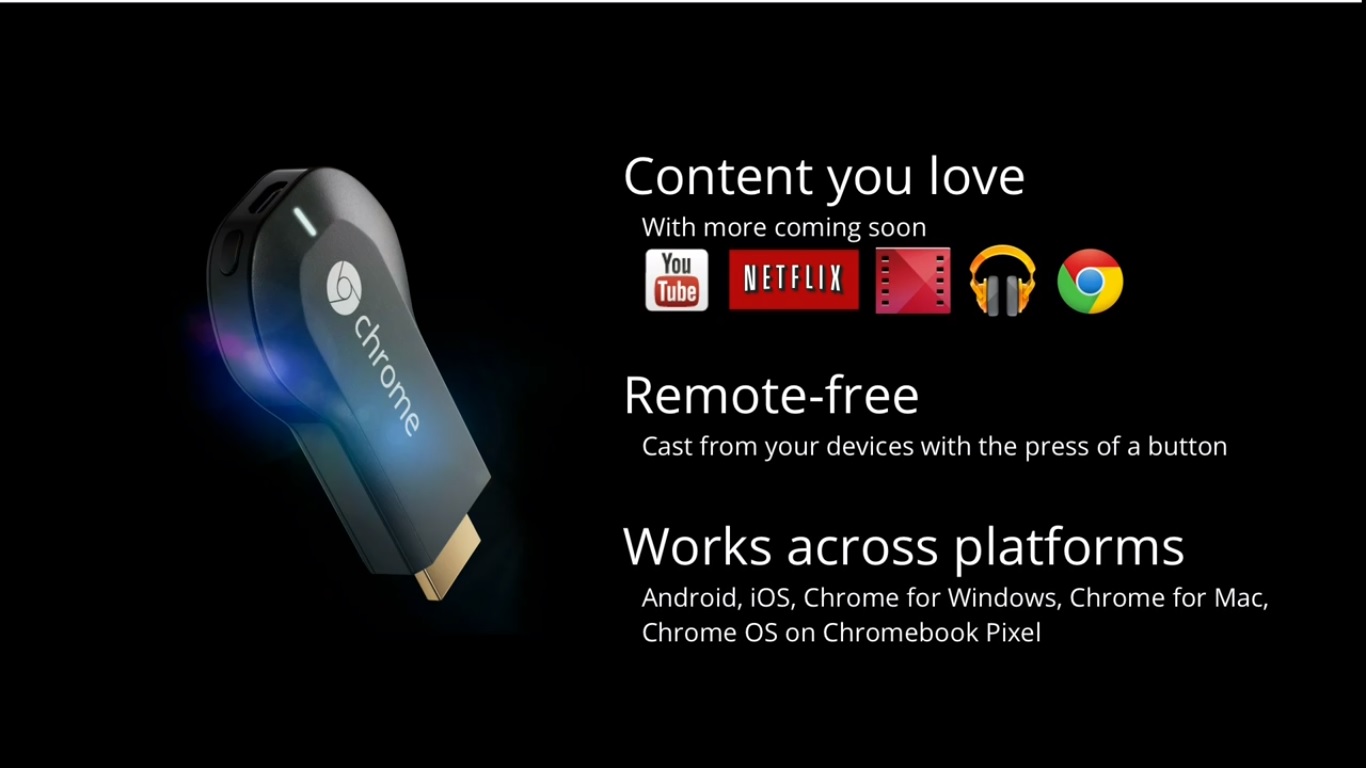Late last night at Google’s Chrome and Android event in San Francisco, the company had one surprise up its sleeve: a product that was in developmemt for months, which amazingly slipped through the rumour mills. The Google Chromecast, in addition to the new Nexus 7 tablet and the announcement of the latest Android 4.3 OS, were the three big announcements at the event, and marks the Internet giants’ latest foray into a viable product for the living room – barely a year after the frankly bizarre Nexus Q streaming device.
Essentially, the Chromecast connects to any HDTV with a HDMI port, and offers an advanced version of screen mirroring, where content beamed to the HDTV from any smartphone, tablet or laptop (that isn’t Windows Phone or BlackBerry 10) will be pulled directly from the Google’s servers in the cloud instead of from the devices, freeing up the devices to be used for other applications.
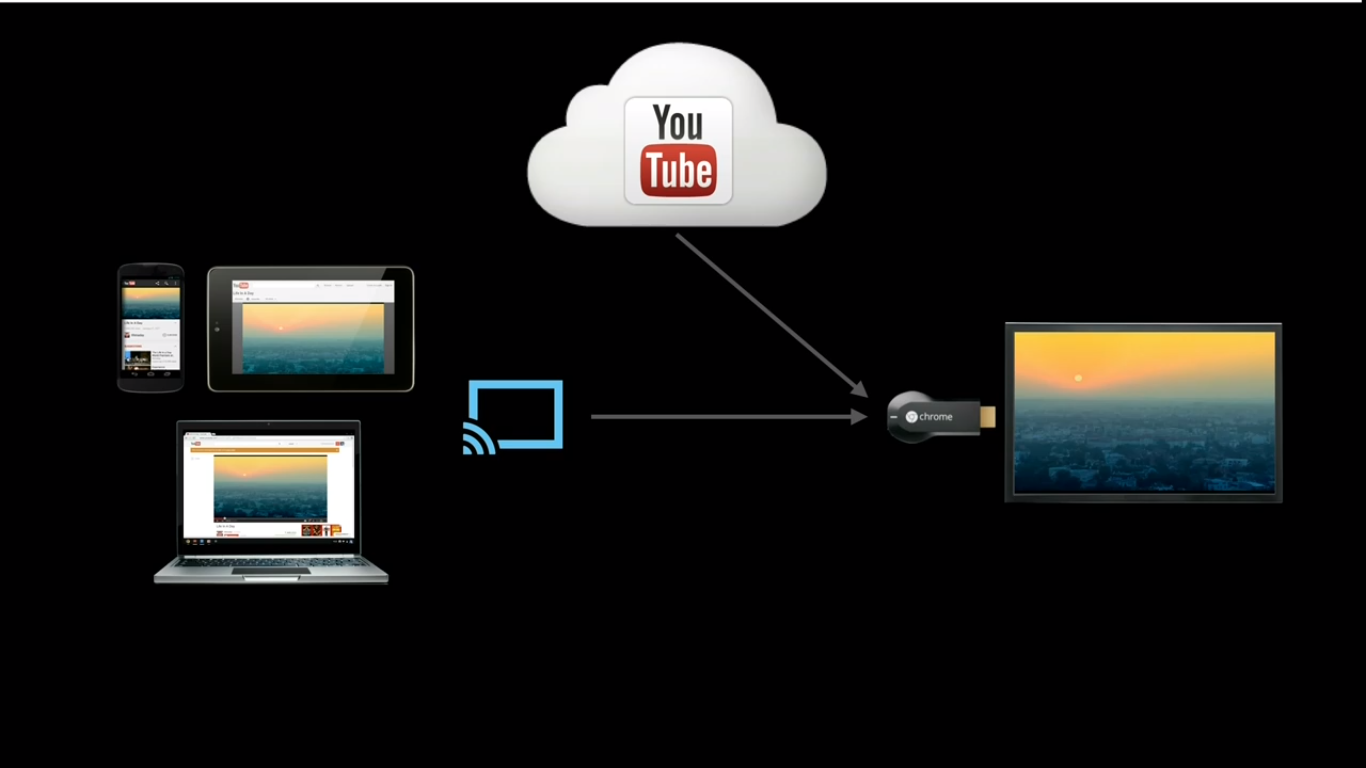 A quick overview of how the Chromecast streams videos from YouTube
A quick overview of how the Chromecast streams videos from YouTube
Besides that, the Chromecast also allows for a few other screen mirroring services, such as from the Chrome browser as well as music from the Google Play Music library. Besides the browser mirroring, is the Google Chromecast merely a glorified dongle?
Article continues after the jump.
Nexus Q 2.0?
Google announced a product last year with similar features at the 2012 I/O developer conference. Called the Nexus Q, it is a developer-friendly media streaming device that was essentially a Google-branded Apple TV. The Nexus Q failed spectacularly for many reasons, such as the steep $299 price tag that was even more costly than some set-top boxes that offered more features. TV streaming services such as Netflix and Hulu weren’t even supported; and only content from the then-limited Google Play Store was allowed. Many speculated that the Nexus Q was built for a lot more than what it offered at launch, but the less than tepid response from the public resulted in Google going back to the drawing boards for a leaner, meaner and cheaper Nexus Q.
And that’s where the Google Chromecast comes in. At launch, the Chromecast offered support for Netflix on top of Google’s media offerings, with the promise of more to come with the release of the Chromecast SDK. It is also aggressively priced, too: at $35 (around RM105) the Chromecast is cheap enough to be an impulse purchase for many around the world. It runs on a simplified version of Google’s Chrome OS, allowing it to support mirroring from individual Chrome tabs on top of the standard media mirroring.
The Apple TV Conundrum
So why is Google hell-bent on a media streaming device? Two words: Apple TV. Launched way back in 2007, the Apple TV and its AirPlay functionality that seamlessly works across all Apple product precedes any other media streaming standards of today, such as DLNA and Miracast. The Apple TV continues to be one of the leading set top boxes in the market, and in the US at least, it’s also backed by the extensive iTunes media library on top of the many streaming services it supports.
With the living room set to be the next battlefield in the tech industry, the stage is set for companies to manufacture compelling companion products for the home television – or even the television itself. Besides the emergence of “smart” TVs that offer Internet capability, built-in browsers and apps, we’re already seeing new products for the living room that make the living room more technology-friendly. At this year’s Computex, ASUS even announced the VivoPC mini PC that masquerades as a set top box. But so far, none have been able to match Apple and its five-year lead it achieved with the Apple TV – which may explain Google’s second attempt at triumphing the battle for the living room.
A Glorified Dongle?
http://www.youtube.com/watch?v=cKG5HDyTW8o
The initial thoughts of many shortly after the announcement was the fact that many smart TVs offered today already offer streaming services via smartphones or tablets. In fact, the YouTube app on Android and iOS already feature the “Cast” icon to stream videos to connected HDTVs via DLNA. Plus, other media streaming services supported by Chromecast, such as Netflix and the Google Play Movies library, aren’t available here without VPN services. If the core functionality of Chromecast is already available on most smart TVs today, and the value-added streaming services are limited by region, does that make the Chromecast merely a glorified HDMI dongle?
Well, not quite.
While both the Apple TV set top box and the Chromecast offer media streaming services, Google’s offering what appears to be a more advanced option that frees up the device beaming the information to the TV. YouTube and Netflix streaming, for example, stream from the cloud instead of from the device itself. This not only allows the device to be used for other applications, but other devices connected to the Chromecast can then seamlessly sync with the dongle and assume control when the original device used to stream media to the TV goes out of range (when the owner leaves the house, for example.)
That’s not all. The Google Chromecast is not tied to Android or the Chrome OS, unlike the Apple TV, whose AirPlay feature is exclusive to Apple devices only. At launch, the Chromecast supports devices running on Android, Chrome OS (but only for the Chromebook Pixel), Windows, Mac OS X, and iOS (Windows Phone and BlackBerry was not mentioned). This, on top of the aggressive pricing, opens the Chromebook to a far greater market than the Apple TV.
Finally, being a Google product, one would expect tight integration between the Chromecast with Google’s services. Another feature that separates the Chromecast from other streaming devices is the ability to mirror not only the desktop, but also individual tabs on the Chrome browser – whether from mobile devices or from laptops. This is potentially a boon for office environments, as well as the occasional family gathering. Also, the Chromecast’s OS-independent approach is unlike any offering in the market, and opens up more avenues to wrest some market share from Apple.
More to Come
An important point to note is also the fact that the Chromecast’s mirroring of Chrome tabs is still in beta. Google’s chief for Android and Chrome Sundar Pichai confirmed that any performance issues will be ironed out when Chrome 30 is released. On top of that, Google is actively roping in more partners to support Chromecast, with Pandora soon to be available in the coming weeks.
At its core, the Google Chromecast is the spiritual successor for the Nexus Q. It offers everything the Nexus Q did, and does so at a mere 10% of what the Nexus Q cost. Not only that, Google added plenty more features that make the Chromecast a compelling device not only for the tech enthusiast, but for the mass consumer market as well.
A glorified dongle, this is not.
Follow us on Instagram, Facebook, Twitter or Telegram for more updates and breaking news.

